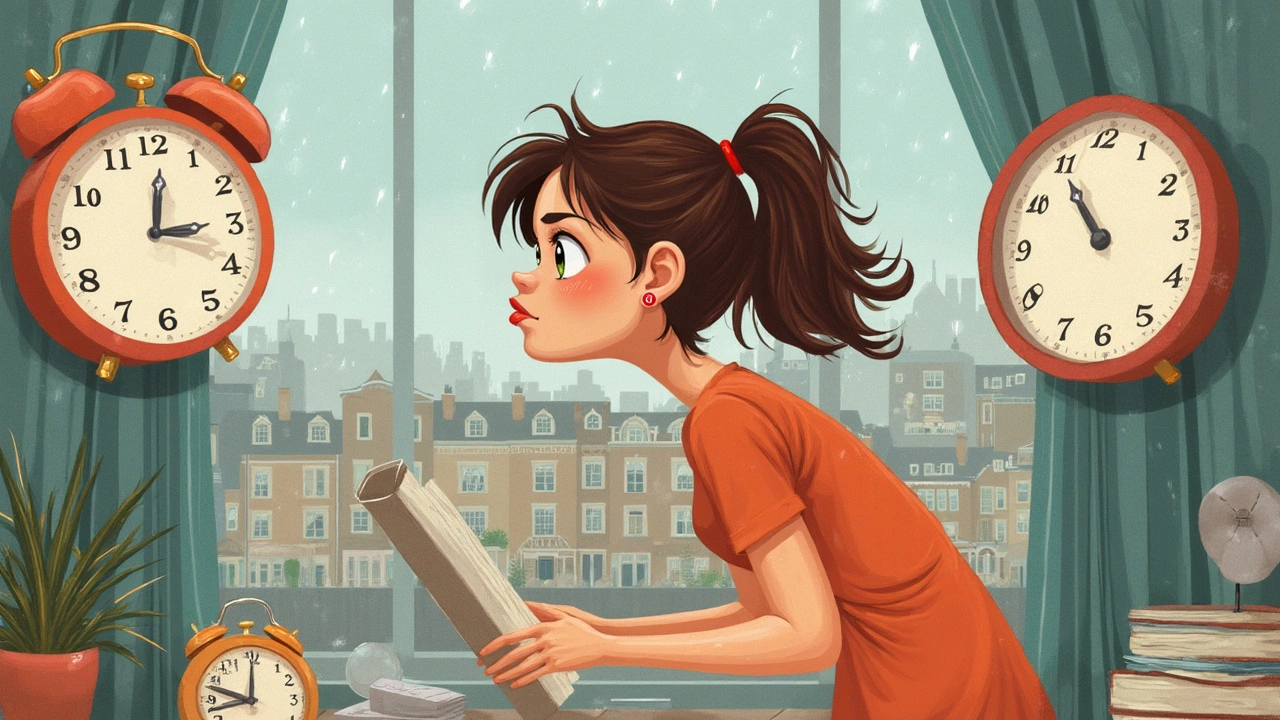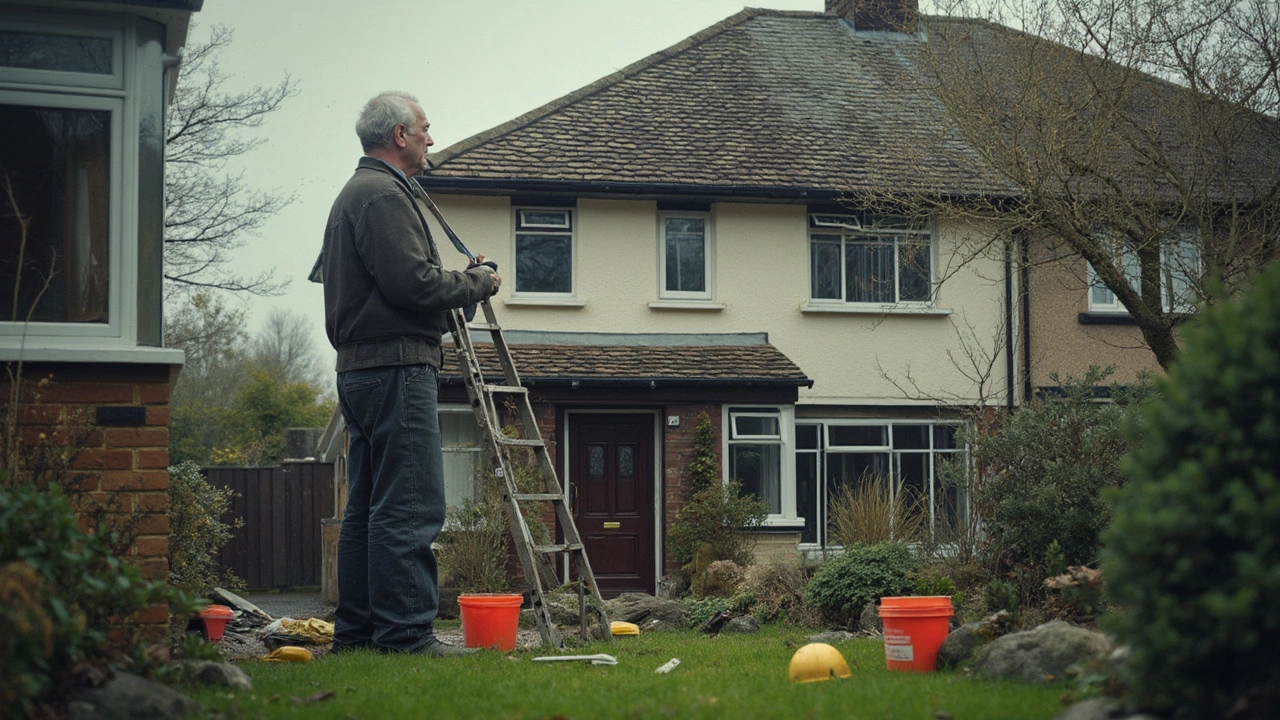Ever cleaned your windows and wondered if it’s really worth the trouble? Window cleaning seems simple, but there’s a lot that people don’t talk about. For starters, balancing on a ladder with a bucket in one hand can quickly turn risky, especially if you’ve got uneven ground or kids sprinting around the house. Falls are the number one reason people end up in the ER during routine chores, and window cleaning is right up there.
But the hassle isn’t just about safety. You need gear—think squeegees, microfiber cloths, cleaning solution, maybe even an extension pole. Buying the right stuff adds up, and cheap tools usually lead to streaky glass, so you wind up frustrated and repeating the job.
- Hidden Safety Hazards
- Unexpected Costs and Equipment Needs
- Time and Effort: More Than You Bargained For
- Damage to Windows and Frames
- Environmental and Health Factors
Hidden Safety Hazards
When people think about window cleaning, they picture a bucket, a squeegee, and a sunny day—but don’t see the real dangers. Accidents happen all the time. According to the U.S. Consumer Product Safety Commission, over 90,000 people visit the ER every year from ladder-related injuries, and a huge chunk of those are folks just cleaning windows at home.
Most windows aren’t ground level. One misstep on a wobbly ladder and you’re facing a long fall. Unstable ground, quick gusts of wind, or slippery rungs multiply the risk. If you’re dealing with second-story or higher, that risk shoots up.
It’s not just falling, either. Cleaning solutions, especially the commercial-grade stuff, can irritate your skin and eyes or cause breathing problems if you’re working in tiny, unventilated spots. It’s easy to assume a quick spray and wipe is harmless, but a stinging eye or dizzy spell on a ladder is the last thing you want.
- Always check your ladder before starting and never stretch past your side.
- Wear non-slip shoes—it’s basic, but it saves plenty of ER trips.
- Don’t mix cleaning chemicals. Stick to one product at a time.
- If you’re handling old windows, be cautious—broken glass is no joke and older frames sometimes mean lead paint around the sills.
Getting professional window cleaning done doesn’t guarantee safety either. Even trained people get hurt, especially in busy cities or on commercial buildings. That’s why pro crews wear harnesses and use fancy gear when they’re up high. If you’re going DIY, know your limits and stay safe. Clean windows aren’t worth a hospital bill.
Unexpected Costs and Equipment Needs
Thinking about grabbing a paper towel and some spray to tackle your window cleaning? Turns out, it’s not that simple. You’ll find yourself needing a pile of things just to do a halfway decent job. Even basic supplies add up—squeegees (good ones, not flimsy dollar-store types), special microfiber cloths that don’t leave lint, buckets, extension poles, and cleaners meant for glass. And if your windows are two stories up, you'll either rent or buy a sturdy ladder, which can easily run you $100 or more.
It doesn’t stop there. Some windows, especially newer ones, need soft-bristle brushes or specialty cleaners so you don’t damage coatings or films. If you hire a professional for window cleaning, you might think you're saving effort, but it's not cheap: most companies charge by the pane or by the hour. On average, getting your whole house done can cost anywhere between $150 and $400, depending on how many windows you have and how difficult they are to reach.
| Item | Low-End Cost | High-End Cost |
|---|---|---|
| Quality Extension Pole | $20 | $50 |
| Professional Squeegee | $10 | $30 |
| Specialized Cleaner | $5 | $20 |
| Safe Ladder | $100 | $200 |
| Pro Service (whole house) | $150 | $400 |
Some folks try to cut corners by using household cleaners like dish soap or vinegar, but these can leave streaks and create more work. Replacement of stripped gear or broken tools just adds to your expense. So as simple as window cleaning sounds, the hidden costs sneak up. If you want streak-free glass, budgeting for quality equipment is hardly optional.

Time and Effort: More Than You Bargained For
People always think window cleaning is a quick weekend project—until they're elbows-deep in buckets and realize half the day is gone. Even if you’re only cleaning a few windows, it takes longer than you think. Count in setup time, moving furniture, finding tools, and dealing with those stubborn streaks that show up just when you think you’re done.
For homes with more than one floor or lots of tricky windows (think grilles, hinges, or skylights), expect to double or triple your effort. According to a survey by a well-known home cleaning brand back in 2023, the average homeowner spends 4-6 hours cleaning just a dozen windows inside and out. That's a solid chunk of your weekend you’re giving up—time better spent on pretty much anything else, right?
There's also the hassle of reaching high places and dealing with unpredictable weather. If it rains just after you finish, that's hours wasted. Plus, most people end up repeating parts of the process to get rid of water spots or missed dirt.
- Window cleaning is notorious for hidden effort—gathering supplies, prepping each room, and dealing with drips on the floor.
- If you want streak-free results, it can mean multiple passes in different lighting.
- Deep cleaning around window sills and tracks adds extra time (and is easy to forget until you’re mid-task).
Let's be real: hiring a professional seems expensive at first, but once you factor in your own time and energy, it starts to look like a pretty good deal. DIY cleaning isn’t always the ‘easy’ or ‘cheap’ route that people expect. Tackling it yourself is fine—if you’re prepared for the commitment.
Damage to Windows and Frames
A lot of folks think window cleaning is harmless, but you can actually do real damage to your window cleaning projects if you’re not careful. Scratching glass is surprisingly easy. Using the wrong tools, like an old razor blade or a scouring pad, leaves permanent marks. Even some common store-bought cleaners have ammonia or other chemicals that can wreck window seals and tint film.
Frames aren’t safe either. Wood frames can soak up water, leading to rot or peeling paint down the road. If you spray too much or miss drying the edges, it speeds up the damage. With aluminum or vinyl frames, harsh scrubbing can scratch the surface or mess up the finish, costing you in repairs. Even a good old garden hose can push water where it shouldn’t go, soaking insulation or warping the window sash.
- Never use abrasive pads or strong solvents on glass.
- Always dry the edges and frames right away to prevent water damage.
- Check the cleaner’s label—no ammonia if your windows have tint or upgraded film.
- Don’t forget—old or cracked caulking can let in water when you spray, so inspect seals first.
According to a survey by a UK insurance company in 2023, accidental damage during DIY cleaning accounted for around 18% of home insurance window claims. That's not pocket change—just fixing a damaged double-glazed pane can set you back $150 to $300, depending on the size.

Environmental and Health Factors
Most folks don’t think about what actually goes down the drain when cleaning windows, but those blue sprays and soapy buckets can hurt way more than just your wallet. Many window cleaning solutions are packed with ammonia, solvents, and other chemicals. Not only do they leave a smell that gives you a headache, but they also end up in the soil or down the storm drain, which isn’t great for your local stream or lake. According to a report from the Environmental Working Group, "household cleaning products are a leading source of indoor air pollution and waterway contamination."
It’s not just about the planet. Breathing in the mist or fumes can irritate your lungs, especially if you’ve got allergies or asthma. Some of these sprays actually warn against using them in small spaces without proper ventilation. If you clean windows often or for a living, you could experience issues like headaches, skin redness, or even trouble breathing after years of exposure—none of which sounds appealing.
There’s also the risk of mold and mildew hiding along window frames and sills. You might think you’re helping by scrubbing hard, but you can actually spread spores into the air, making allergies way worse. Most people don’t suit up with gloves or masks when doing a quick window cleaning, so it’s easy for irritation to sneak up on you.
| Common Chemical Risks | Potential Effects |
|---|---|
| Ammonia & Solvents | Irritated eyes, headaches, indoor air pollution |
| Improper Disposal | Waterway contamination, harm to plants/fish |
| Mold Exposure | Allergy flare-ups, respiratory irritation |
If you want to dodge these problems, switch to basic soap and water, or look for "green" cleaners. And always crack a window or wear gloves—simple moves that make window cleaning a lot less risky for you and the environment.
